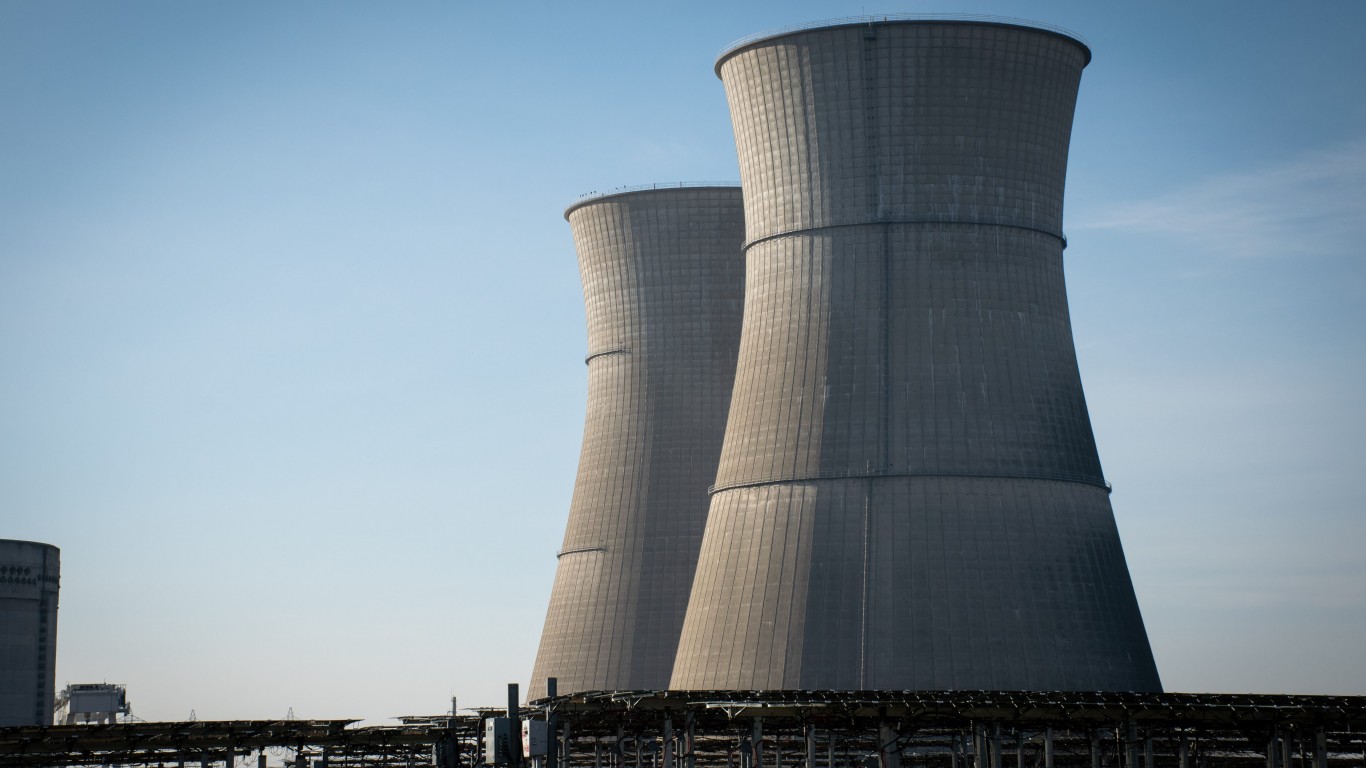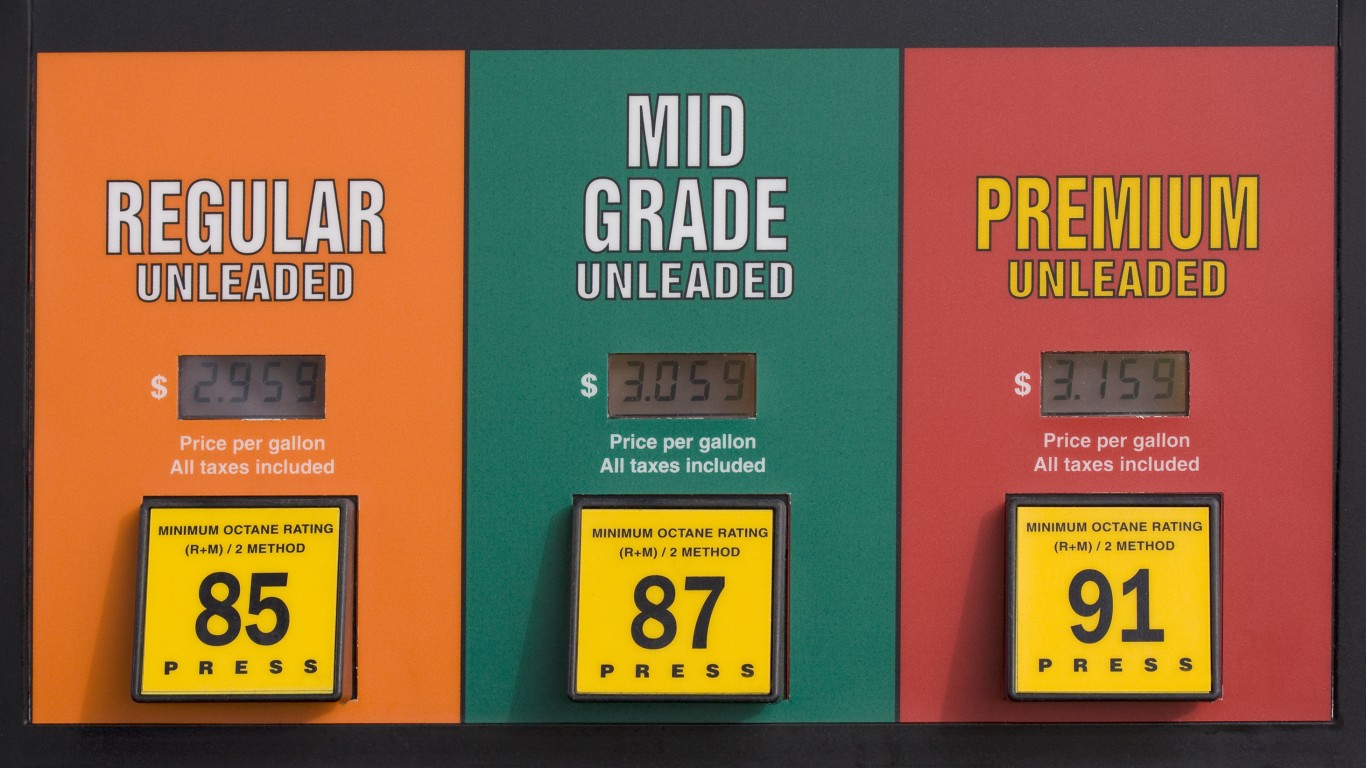
Chesapeake Energy Corp. (NYSE: CHK) reported fourth-quarter and full-year 2015 earnings before markets opened Wednesday. For the quarter, the oil and gas exploration and production company posted an adjusted net loss per share of $0.16 on revenues of $2.65 billion. In the same period a year ago, the company reported adjusted earnings per share (EPS) of $0.38 on revenues of $5.7 billion. Fourth-quarter results also compare to the Thomson Reuters consensus estimates for a net loss per share of $0.17 and $2.63 billion in revenues.
For the full year, Chesapeake reported a net loss of $0.20 per share and revenues of $12.76 billion, compared with earnings per share of $1.49 and revenues of $23.13 billion in 2014. Analysts had estimated a per-share net loss of $0.22 and revenues of $11.38 billion.
On a GAAP basis, the company reported a quarterly net loss of $2.23 billion ($3.36 per diluted share). The primary cause of the loss was a $2.83 billion noncash drop in the carrying value of Chesapeake’s oil and gas assets due to the low prices for oil and natural gas. In the third quarter the company took a similar impairment charge of $4.7 billion.
For the full-year, the GAAP net loss totaled $22.43 per share, again due to a non-cash impairment charge of $18.24 billion in the company’s carrying value of oil and gas assets. Chesapeake’s total pretax loss for the year amounted to $19.1 billion, virtually all of it due to low commodity prices.
Chesapeake focused on its 2016 forecast and who can blame it? Capital spending this year is forecast in a range of $1.3 billion to $1.8 billion, a year-over-year drop of 57% at the midpoint of the range from the 2015 capex total of $3.6 billion. About 70% of the spending is targeted for well completion. That means the company is going to focus on generating cash in the current low-price environment, a smart move, but maybe not enough to encourage investors.
In 2016, Chesapeake plans to place approximately 330 to 370 wells into production, resulting in a drop in total production in the range of 0% to 5% compared to 2015, after adjusting for asset sales. The company had approximately $700 million in asset divestitures that had closed or that are signed and expected to close between now and the end of the 2016 second quarter. The company expects that these asset sales will result in lower production of approximately 31,000 barrels of oil equivalent per day of production in 2016.
Chesapeake has also hedged more than 590 billion cubic feet of its projected 2016 natural gas production at approximately $2.84 per thousand cubic feet and more than 19 million barrels of its projected 2016 oil production at approximately $47.79 per barrel. In 2015 Chesapeake produced more than a trillion cubic feet of natural gas and 42 million barrels of oil.
Analysts are calling for a first-quarter net loss of $0.21 per share on revenues of $2.57 billion, as well as a net loss of $0.77 per share on revenues of $10.46 billion for the full year.
CEO Doug Lawler said:
In light of the challenging commodity price environment, our focus for 2016 is to improve our liquidity, further reduce our cost structure and address our near-term debt maturities to strengthen our balance sheet. Our tactical focus areas remain asset divestitures, of which we are pleased to have approximately $500 million in net proceeds closed or under signed sales agreements, liability management and open market purchases of our bonds.
The company ended the year with debt totaling $9.7 billion, down from $11.8 billion at the end of 2014. As we noted in our preview of Chesapeake’s earnings, the company said that it will repay the remaining balance on its 3.25% senior notes due next month. Chesapeake also said that it “expects to take advantage of the significant discounts in the prices of its debt securities in 2016.” That indicates that the company may be able to buy up some outstanding debt at a significant discount.
One final item: The company has amended some of its midstream transportation agreements and estimates that it has lowered its total transportation costs for natural gas by about $0.06 per thousand cubic feet. While this is good for Chesapeake, the point here is to keep an eye on other midstream companies that certainly will be getting pressure to make similar changes for other producers.
Chesapeake had a terrible year and there’s not much else to say about that. Its 2016 focus on cash generation and more debt reduction is not likely to sit well with investors, a notoriously impatient lot. The company’s plans offer a hint of promise in another year or two for those willing to tough it out.
Shares are trading up more than 6% in Wednesday’s premarket at $2.33. Chesapeake’s stock closed down about 8.4% on Tuesday, at $2.19 in a 52-week range of $1.50 to $18.55. The consensus target price for the shares was $4.00 before this latest report. The highest price target prior to the report was $10 a share.
Are You Still Paying With a Debit Card?
The average American spends $17,274 on debit cards a year, and it’s a HUGE mistake. First, debit cards don’t have the same fraud protections as credit cards. Once your money is gone, it’s gone. But more importantly you can actually get something back from this spending every time you swipe.
Issuers are handing out wild bonuses right now. With some you can earn up to 5% back on every purchase. That’s like getting a 5% discount on everything you buy!
Our top pick is kind of hard to imagine. Not only does it pay up to 5% back, it also includes a $200 cash back reward in the first six months, a 0% intro APR, and…. $0 annual fee. It’s quite literally free money for any one that uses a card regularly. Click here to learn more!
Flywheel Publishing has partnered with CardRatings to provide coverage of credit card products. Flywheel Publishing and CardRatings may receive a commission from card issuers.
Thank you for reading! Have some feedback for us?
Contact the 24/7 Wall St. editorial team.




